Self-cleaning ovens make life so much easier. Just set the cleaning cycle, kick back, and let the oven do all the hard work. You’ll save time and have a sparkling clean space ready for your next cooking adventure!
Self Cleaning Ovens
Experience effortless maintenance and unbeatable cooking performance with our range of self cleaning ovens designed for modern kitchens
Product List
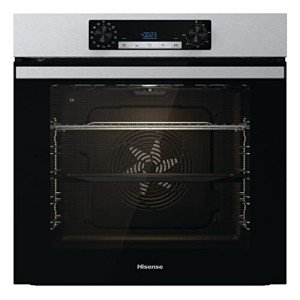
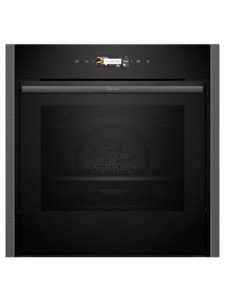
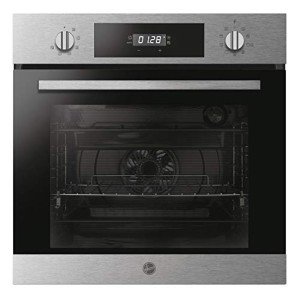
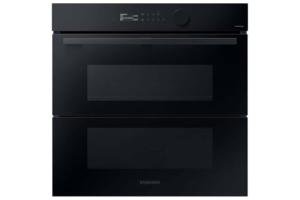
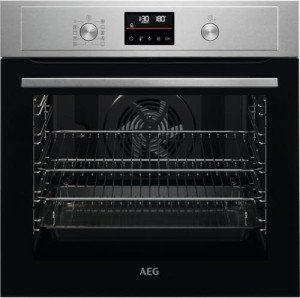
AEG Built-In SurroundCook Oven
Aeg
Product Review Score
4.39 out of 5 stars
81 reviews€573.67 €480.74
For decades, cleaning the oven has been considered one of the most dreaded household chores. Burnt-on food, grease splatters, and smoky residue can make the interior of an oven look grimy and cause unpleasant odors. To alleviate this problem, appliance manufacturers developed self-cleaning ovens—innovative kitchen appliances designed to minimize or even eliminate the need for manual scrubbing.
In this comprehensive guide, we’ll explore how self-cleaning ovens work, their advantages and drawbacks, tips for safe use, and what to consider before purchasing one.
What Is a Self-Cleaning Oven?
A self-cleaning oven is an appliance equipped with a feature that uses high heat or steam to break down baked-on food and grease, effectively turning residue into ash that can be wiped away easily. Unlike traditional ovens, these units are built to withstand extreme cleaning cycles without damage.
Most modern ovens now include some form of self-cleaning option, making them increasingly popular for busy households.
Types of Self-Cleaning Ovens
There are generally three main types of self-cleaning systems available today.
| Type | How It Works | Pros | Cons |
|---|---|---|---|
| High-Temperature (Pyrolytic) | Heats the oven to 800–1000°F, incinerating grease and food residues into ash. | Highly effective, minimal effort required. | Uses large amounts of energy, can produce strong odors. |
| Steam Cleaning | Uses low heat (around 250°F) and water/steam to soften food particles. | Energy-efficient, quicker, low odor. | May require scrubbing for stubborn stains. |
| Catalytic Liners | Special oven walls absorb and break down grease at normal cooking temperatures. | Continuous cleaning, less energy consumption. | Liners may need replacing, less effective for heavy soil. |
Advantages of Self-Cleaning Ovens
Owning a self-cleaning oven provides several benefits:
- Convenience – Eliminates hours of scrubbing burnt residue.
- Improved Kitchen Hygiene – Reduces grease buildup, minimizing bacteria and odors.
- Enhanced Safety – Removing food debris decreases risks of smoke or accidental fires.
- Eco-Friendly Options – Steam cleaning models use less chemical cleaning agents.
- Durability – Built with advanced materials that can withstand high temperatures.
Potential Drawbacks
While appealing, self-cleaning ovens are not without challenges:
- High Energy Consumption (especially for pyrolytic models).
- Strong Odors during cleaning can be unpleasant; ventilation is necessary.
- Safety Concerns – The oven becomes extremely hot during pyrolytic cleaning.
- Long Cleaning Cycles – Some modes may last several hours.
- Maintenance Costs – Catalytic liners may need replacement periodically.
Safety Tips for Using a Self-Cleaning Oven
To maximize performance and ensure safety, follow these best practices:
- Remove Oven Racks – High heat may damage racks’ coating. Clean them separately.
- Ventilate the Area – Open windows or use exhaust fans to prevent odors from lingering.
- Keep Pets Away – Birds and small pets are sensitive to fumes produced during cleaning.
- Do Not Use Harsh Chemicals – The self-cleaning cycle is designed to work without detergents.
- Wipe Up Large Spills First – Prevent smoke and burning odors by removing excess food before activating the cycle.
- Check Manufacturer Recommendations – Different brands may have specific instructions for safe use.
When Should You Use a Self-Cleaning Cycle?
- After heavy baking or roasting sessions when grease buildup is noticeable.
- If you notice persistent smells coming from your oven.
- Periodically (every few months) depending on how frequently you cook.
For light messes, steam cleaning or manual wiping may be more efficient than a full pyrolytic cycle.
Buying Considerations
When shopping for a self-cleaning oven, consider these key factors:
- Type of Cleaning Method – Pyrolytic vs. steam vs. catalytic liners.
- Energy Usage – Check energy ratings for efficiency.
- Size & Capacity – Fit for household needs and kitchen space.
- Budget – Self-cleaning models may be more expensive upfront.
- Extra Features – Convection cooking, smart controls, or dual-fuel options.
Cost Comparison
| Oven Type | Average Price Range | Cleaning Method | Energy Efficiency |
|---|---|---|---|
| Standard Manual-Clean Oven | £400 – £700 | Manual scrubbing required | High (no special cycle) |
| Steam-Cleaning Oven | £600 – £1,000 | Low-temp steam cleaning | Moderate to high |
| Pyrolytic Self-Cleaning Oven | £800 – £2,000 | High-temp incineration | Moderate (higher energy use) |
FAQs About Self-Cleaning Ovens
Q1. Are self-cleaning ovens safe?
Yes, they’re safe when used according to manufacturer guidelines. Always ensure good ventilation and keep children and pets away during the cycle.
Q2. Do self-cleaning ovens use a lot of electricity?
Pyrolytic ovens are energy-intensive, as they require extremely high heat for several hours. Steam cleaning ovens are a more energy-efficient option.
Q3. Can I leave oven racks inside during cleaning?
It’s recommended to remove racks, as they may discolor or lose their shine when exposed to high heat.
Q4. Can I still use oven cleaners with a self-cleaning oven?
No, chemical cleaners should not be used inside a self-cleaning oven, as residues can damage the coating and emit harmful fumes.
Q5. How often should I run the self-cleaning cycle?
Frequency depends on usage. For regular home cooks, every few months is sufficient. Heavy bakers may run it more often.
Q6. Which is better: self-cleaning or steam cleaning?
It depends on lifestyle. Pyrolytic delivers thorough cleaning but requires more time and energy. Steam cleaning offers quick, eco-friendly maintenance but may not remove baked-on grime as effectively.
Final Thoughts
Self-cleaning ovens offer a modern solution to a timeless kitchen headache. By saving time and reducing the need for toxic cleaning chemicals, they represent a significant step forward in home appliance convenience. However, choosing the right type—whether pyrolytic, steam, or catalytic—requires balancing factors such as cost, energy efficiency, and cleaning power.
For families that cook frequently, a self-cleaning oven can be a worthwhile investment. By understanding how they work and following safety guidelines, homeowners can enjoy a cleaner, safer, and more efficient kitchen environment with minimal effort.